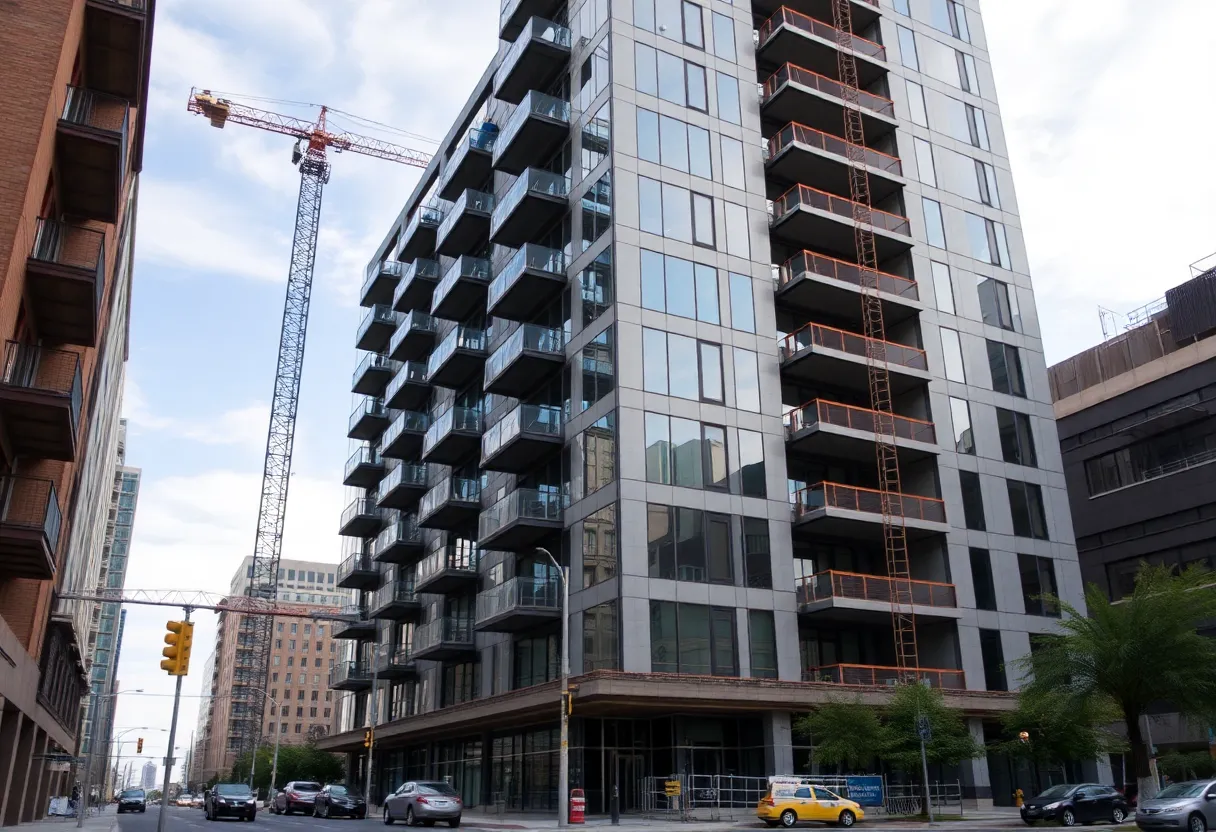Tucson, October 22, 2025
Tucson has enacted a new ordinance that simplifies the permitting process for converting vacant office buildings into residential units, aiming to tackle the city’s housing crisis. With this initiative, developers can expedite projects like Pima Properties’ plan to transform a downtown high-rise into affordable apartments for young professionals. The ordinance seeks to reduce vacancy rates exceeding 25% by repurposing underutilized spaces, with projections of up to 300 new housing units by 2026.
Tucson
In a significant step toward addressing the city’s housing crisis, a new city ordinance now streamlines permitting processes for converting vacant office buildings into residential units. This change has accelerated Tucson’s office-to-residential conversion boom, making it easier for developers to transform underutilized downtown spaces into affordable apartments. Pima Properties has announced plans to convert a downtown high-rise into housing targeted at young professionals, marking one of the first major projects under the updated regulations.
The ordinance reduces bureaucratic hurdles, cutting approval times from months to weeks in many cases. This efficiency is expected to spur more conversions, with the project by Pima Properties aiming to create affordable living options in the heart of the city. Such developments are projected to add up to 300 units by 2026, directly tackling Tucson’s ongoing shortage of affordable housing. The focus on young professionals responds to the growing demand for urban, accessible accommodations in a city where rental prices have risen steadily in recent years.
The momentum behind these conversions stems from high office vacancy rates, which have lingered above 25% since the post-pandemic shift to remote work. Downtown buildings that once buzzed with corporate activity now stand largely empty, creating opportunities for adaptive reuse. By repurposing these structures, the city can breathe new life into its central business district, turning economic challenges into residential opportunities. The initiative not only aims to house more residents but also to stabilize the local real estate market by increasing supply in high-demand areas.
Project Details and Economic Benefits
Pima Properties’ high-rise conversion exemplifies the practical impact of the new ordinance. The development will feature a mix of studio, one-, and two-bedroom apartments designed for affordability, ensuring rents remain accessible for entry-level workers and recent graduates. Completion is slated for phases through 2026, with the first units becoming available as early as next year. This project alone could house hundreds of new residents, easing pressure on Tucson’s suburban housing markets.
Funding for the conversion comes partly from federal grants allocated for urban revitalization efforts. These grants support the structural modifications needed, such as installing residential plumbing, kitchens, and enhanced fire safety systems in buildings originally designed for office use. The financial backing underscores the broader national push to address housing affordability through innovative reuse of existing infrastructure, rather than solely relying on new construction.
Local community leaders have highlighted the economic ripple effects of this boom. Construction on the Pima Properties project is anticipated to generate numerous short-term jobs in areas like carpentry, electrical work, and project management. Once occupied, the apartments are expected to boost nearby businesses, including restaurants, shops, and services that thrive on foot traffic from downtown residents. This influx of activity could revitalize commercial strips that have suffered from reduced office worker presence, fostering a more vibrant urban core.
Background on Tucson’s Housing and Office Market Challenges
Tucson’s office-to-residential trend builds on lessons from similar efforts in other cities facing post-pandemic real estate shifts. The city’s 25% vacancy rate in downtown offices reflects a nationwide pattern where hybrid work models have decreased the need for traditional workspaces. In response, municipal leaders introduced the streamlining ordinance to incentivize conversions, recognizing that empty buildings represent wasted potential in a time of housing scarcity.
Prior to this ordinance, developers faced lengthy permitting processes that deterred investment in adaptive reuse projects. The new rules simplify zoning variances and environmental reviews, provided the conversions meet affordability and sustainability criteria. This policy shift aligns with Tucson’s long-term urban planning goals, which prioritize dense, walkable neighborhoods over sprawling development on the outskirts.
The housing shortage in Tucson has been exacerbated by population growth and limited new builds, leading to average rents that strain middle-income households. By converting existing high-rises, the city avoids the higher costs and environmental impact of ground-up construction. Experts note that such projects can achieve faster timelines and lower per-unit costs, making them a strategic tool for affordability.
Looking ahead, the success of the Pima Properties initiative could inspire additional conversions across Tucson. With more than a dozen office buildings in the downtown area potentially eligible, the ordinance positions the city to add thousands of residential units over the next decade. This approach not only addresses immediate housing needs but also supports sustainable growth by maximizing the use of existing urban assets.
The broader implications extend to Tucson’s appeal as a live-work-play destination. Revitalized downtown areas could attract more young talent, bolstering the local economy in sectors like tech, education, and tourism. As the conversion boom unfolds, stakeholders will monitor how these changes influence property values, community dynamics, and overall quality of life in the city.
FAQ
What is the new city ordinance in Tucson?
The new city ordinance streamlines permitting processes for converting vacant office buildings into residential units.
What project has Pima Properties announced?
Pima Properties has announced plans to convert a downtown high-rise into affordable apartments targeted at young professionals.
How many units could be added by 2026?
The initiative could add 300 units by 2026.
What vacancy rates prompted this change?
The conversions address post-pandemic vacancy rates exceeding 25%.
How is the project funded?
The project is funded partly by federal grants.
What economic benefits are expected?
The move is expected to boost the local economy through construction jobs.
Key Features of Tucson’s Office-to-Residential Conversion Initiative
| Feature | Description |
|---|---|
| New Ordinance | Streamlines permitting for office-to-residential conversions |
| Pima Properties Project | Converts downtown high-rise into affordable apartments for young professionals |
| Projected Units | 300 units by 2026 |
| Vacancy Context | Addresses rates exceeding 25% post-pandemic |
| Funding Source | Partly federal grants |
| Economic Impact | Boosts local economy via construction jobs |
Deeper Dive: News & Info About This Topic
HERE Resources
Arizona Wildcats Secure Narrow Win Over Houston Cougars
Tucson Emerges as a Key Creative Hub in National Report




